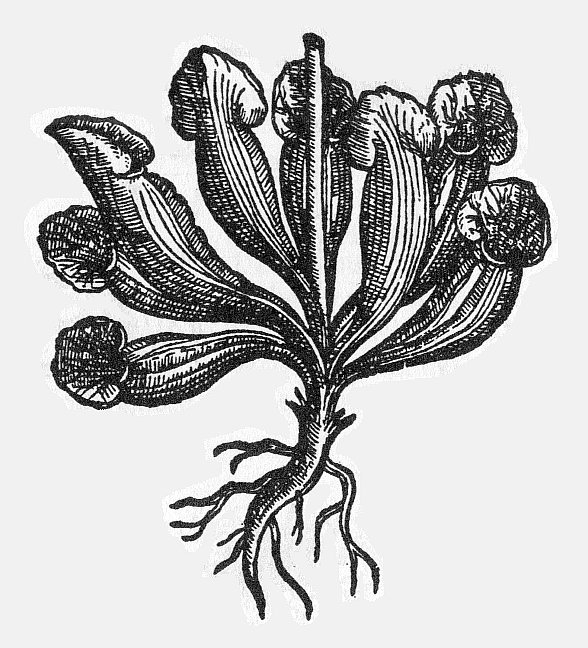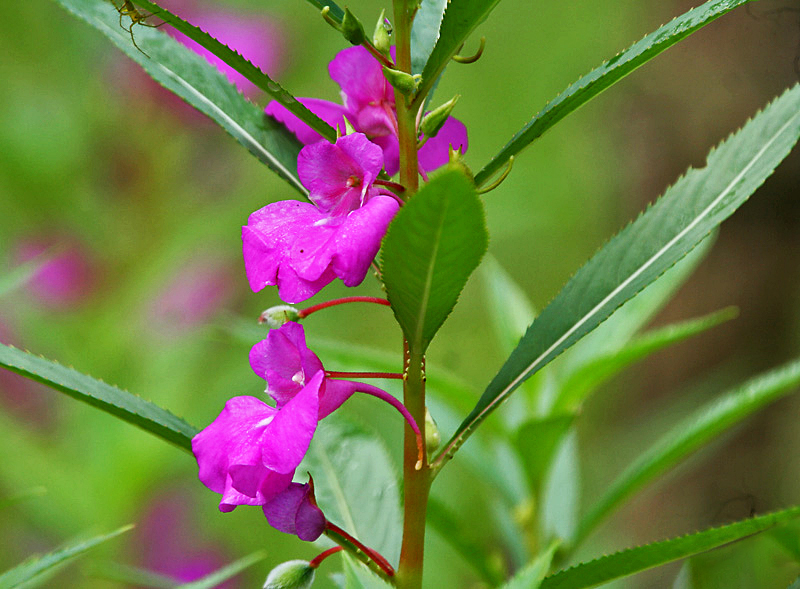|
Sarraceniaceae
Sarraceniaceae are a family of pitcher plants, belonging to order Ericales (reassigned from Nepenthales). The family comprises three extant genera: ''Sarracenia'' (North American pitcher plants), '' Darlingtonia'' (the cobra lily or California pitcher plant), and ''Heliamphora'' (sun pitchers). The extinct '' Archaeamphora longicervia'' may also belong to this family, although later studies question that interpretation. All three are carnivorous plants that lure insects with nectar and use their elongated, tube-shaped leaves filled with water and digestive enzymes to catch and consume them. Digestive enzymes are not always produced by the plants themselves. Digestive mutualisms are common in Sarraceniaceae: both ''Sarracenia'' and ''Darlingtonia'' rely on commensal bacteria to supplement or produce all of their enzymes. Many species also use downward-pointing hairs and waxy secretions to make it difficult for insects to escape. ''Sarracenia'' and ''Darlingtonia'' are native to ... [...More Info...] [...Related Items...] OR: [Wikipedia] [Google] [Baidu] |
Heliamphora
The genus ''Heliamphora'' ( or ; Greek language, Greek: ''helos'' "marsh" and ''amphoreus'' "amphora") contains 24 species of pitcher plants endemism, endemic to South America.McPherson, S., A. Wistuba, A. Fleischmann & J. Nerz 2011. ''Sarraceniaceae of South America''. Redfern Natural History Productions, Poole. The species are collectively known as sun pitchers, based on the mistaken notion that the ''heli'' of ''Heliamphora'' is from the Greek ''helios'', meaning "sun". The name instead derives from the Greek ''helos'', meaning "marsh", so a more accurate translation of their scientific name would be marsh pitcher plants. Species in the genus ''Heliamphora'' are carnivorous plants that consist of a modified leaf form that is fused into a tubular shape. They have evolved mechanisms to attract, trap, and kill insects; and control the amount of water in the pitcher. At least one species (''Heliamphora tatei, H. tatei'') produces its own proteolysis, proteolytic enzymes that allo ... [...More Info...] [...Related Items...] OR: [Wikipedia] [Google] [Baidu] |
Sarraceniaceae Of South America
''Sarraceniaceae of South America'' is a monograph on the pitcher plants of the genus ''Heliamphora'' by Stewart McPherson, Andreas Wistuba, Andreas Fleischmann, and Joachim Nerz. It was published in September 2011 by Redfern Natural History Productions and covered all species known at the time.McPherson, S., A. Wistuba, A. Fleischmann & J. Nerz 2011. ''Sarraceniaceae of South America''. Redfern Natural History Productions, Poole. The book is part of a comprehensive two-volume work on the Sarraceniaceae. The other tome, '' Sarraceniaceae of North America'', deals with the genera '' Darlingtonia'' and ''Sarracenia''. Intended as the first volume, ''Sarraceniaceae of South America'' includes an introduction to the family Sarraceniaceae as a whole. Both volumes were nominees for the 2012 CBHL Annual Literature Award, in the Technical Interest category. In addition to the main authors, others who worked on the book include Andy Smith and Wayne Jenski, who produced a number of anato ... [...More Info...] [...Related Items...] OR: [Wikipedia] [Google] [Baidu] |
Archaeamphora Longicervia
''Archaeamphora longicervia'' is a fossil plant species, the only member of the hypothetical genus ''Archaeamphora''. Fossil material assigned to this taxon originates from the Yixian Formation of northeastern China, dated to the Early Cretaceous (around ).Li, H. 2005. ''Acta Botanica Gallica'' 152(2): 227-234.Supplementary Information 1) The species was originally described as a pitcher plant with close affinities to extant members of the family Sarraceniaceae. This would make it the earliest known carnivorous plant and the only known fossil record of Sarraceniaceae, or the New World pitcher plant family. ''Archaeamphora'' is also one of the three oldest known genera of angiosperms (flowering plants). Li (2005) wrote that "the existence of a so highly derived Angiosperm in the Early Cretaceous suggests that Angiosperms should have originated much earlier, maybe back to 280 mya as the molecular clock studies suggested". Subsequent authors have questioned the identification of ... [...More Info...] [...Related Items...] OR: [Wikipedia] [Google] [Baidu] |
Sarracenia
''Sarracenia'' ( or ) is a genus comprising 8 to 11 species of North American pitcher plants, commonly called trumpet pitchers. The genus belongs to the family Sarraceniaceae, which also contain the closely allied genera '' Darlingtonia'' and '' Heliamphora''. ''Sarracenia'' is a genus of carnivorous plants indigenous to the eastern seaboard of the United States, Texas, the Great Lakes area and southeastern Canada, with most species occurring only in the south-east United States (only '' S. purpurea'' occurs in cold-temperate regions). The plant's leaves have evolved into a funnel or pitcher shape in order to trap insects. The plant attracts its insect prey with secretions from extrafloral nectaries on the lip of the pitcher leaves, as well as a combination of the leaves' color and scent. Slippery footing at the pitcher's rim causes insects to fall inside, where they die and are digested by the plant with proteases and other enzymes. Description ''Sarracenia'' are herb ... [...More Info...] [...Related Items...] OR: [Wikipedia] [Google] [Baidu] |
Darlingtonia Californica
''Darlingtonia californica'' —also called the California pitcher plant, the Oregon pitcher plant, cobra lily or cobra plant—is a species of carnivorous plant in the new world pitcher plant family, Sarraceniaceae. It is the sole species within its monotypic genus, ''Darlingtonia''. The cobra lily is native to Northern California and Oregon, in the western United States, where the climate—while typically thought of as cool and humid—may be quite arid for many months of the year, more so than many carnivorous or pitcher plant genera could feasibly survive (such as '' Heliamphora'', ''Nepenthes'' or ''Sarracenia''). However, the cobra lily has evolved into life along the West Coast and in the lower Pacific Northwest through its carnivorous adaptions, where it may be found near bogs, vernal pools, on forested rocky slopes (near snowmelt, especially), creeks, or near seeps with cold running water, usually on serpentine soils. It has even been observed growing in drainage di ... [...More Info...] [...Related Items...] OR: [Wikipedia] [Google] [Baidu] |
Sarracenia Purpurea
''Sarracenia purpurea'', the purple pitcher plant, northern pitcher plant, turtle socks, or side-saddle flower, is a carnivorous plant in the family Sarraceniaceae. Taxonomy The species is further divided into two subspecies, ''S. purpurea'' subsp. ''purpurea'' and ''S. purpurea'' subsp. ''venosa''. The former is found north of New Jersey north, while the latter is found south of New Jersey and tolerates warmer temperatures. In 1999, ''Sarracenia purpurea'' subsp. ''venosa'' var. ''burkii'' was described as a species of its own: ''Sarracenia rosea''. This re-ranking has been debated among carnivorous plant enthusiasts since then, but further Morphology (biology), morphological evidence has supported the split. The following species and infraspecific Taxon, taxa are usually recognized: *''Sarracenia purpurea'' subsp. ''purpurea'' **''Sarracenia purpurea'' subsp. ''purpurea'' f. ''heterophylla'' **''Sarracenia purpurea'' subsp. ''purpurea'' f. ''ruplicola'' (invalid) *''Sarracenia p ... [...More Info...] [...Related Items...] OR: [Wikipedia] [Google] [Baidu] |
Heliamphora Chimantensis
''Heliamphora chimantensis'' is a species of marsh pitcher plant endemic to the Chimantá Massif in Venezuela. Specifically, it has been recorded from Apacará and Chimantá Tepuis.McPherson, S., A. Wistuba, A. Fleischmann & J. Nerz (2011). ''Sarraceniaceae of South America''. Redfern Natural History Productions, Poole. It is thought to be more closely related to the southern growing '' H. tatei'' and '' H. neblinae'' than to any of the other species found in the Gran Sabana and its tepuis. All other species known from this region have between 10 and 15 anthers, while ''H. tatei'', ''H. neblinae'' and ''H. chimantensis'' have around 20. However, the anthers of ''H. tatei'' and the closely related ''H. neblinae'' (once thought to be a variety of the former) are 7–9 mm long, while those of ''H. chimantensis'' only reach 5 mm in length. References Further reading * Fleischmann, A. & J.R. Grande Allende (2012) 2011'br>Taxon ... [...More Info...] [...Related Items...] OR: [Wikipedia] [Google] [Baidu] |
Carnivorous Plants
Carnivorous plants are plants that derive some or most of their nutrients from trapping and consuming animals or protozoans, typically insects and other arthropods, and occasionally small mammals and birds. They have adapted to grow in waterlogged sunny places where the soil is thin or poor in nutrients, especially nitrogen, such as acidic bogs. They can be found on all continents except Antarctica, as well as many Pacific islands. In 1875, Charles Darwin published '' Insectivorous Plants'', the first treatise to recognize the significance of carnivory in plants, describing years of painstaking research. True carnivory is believed to have evolved independently at least 12 times in five different orders of flowering plants, and is represented by more than a dozen genera. This classification includes at least 583 species that attract, trap, and kill prey, absorbing the resulting available nutrients. Venus flytraps (''Dionaea muscipula''), pitcher plants, and bladderworts (''Utri ... [...More Info...] [...Related Items...] OR: [Wikipedia] [Google] [Baidu] |
Pitcher Plant
Pitcher plants are carnivorous plants known as pitfall traps—a prey-trapping mechanism featuring a deep cavity filled with digestive liquid. The traps of pitcher plant are considered to be "true" pitcher plants and are formed by specialized leaves. The plants attract and drown the prey with nectar. Types The term "pitcher plant" generally refers to members of the Nepenthaceae and Sarraceniaceae families, but similar pitfall traps are employed by the monotypic Cephalotaceae and some members of the Bromeliaceae. The families Nepenthaceae and Sarraceniaceae are the most species-rich families of pitcher plants. Nepenthaceae The Nepenthaceae contains a single genus, '' Nepenthes'', containing over 100 species and numerous hybrids and cultivars. In this genus of Old World pitcher plants, the pitchers are borne at the end of tendrils that extend from the midrib of an otherwise unexceptional leaf. Old World pitcher plants are typically characterized as having reduced and ... [...More Info...] [...Related Items...] OR: [Wikipedia] [Google] [Baidu] |
Ericales
The Ericales are a large and diverse order of flowering plants in the asterid group of the eudicots. Well-known and economically important members of this order include tea and ornamental camellias, persimmon, ebony, blueberry, cranberry, lingonberry, huckleberry, kiwifruit, Brazil nut, argan, sapote, azaleas and rhododendrons, heather, heath, impatiens, phlox, Jacob's ladder, primroses, cyclamens, shea, sapodilla, pouterias, and trumpet pitchers. The order includes 22 families, according to the APG IV system of classification. The Ericales include trees, bushes, lianas, and herbaceous plants. Together with ordinary autophytic plants, they include chlorophyll-deficient mycoheterotrophic plants (e.g., '' Sarcodes sanguinea'') and carnivorous plants (e.g., genus '' Sarracenia''). Mycorrhizal associations are quite common among the order representatives, and three kinds of mycorrhiza are found exclusively among Ericales (namely, ericoid, arbutoid and monotro ... [...More Info...] [...Related Items...] OR: [Wikipedia] [Google] [Baidu] |
Darlingtonia (plant)
{{disambig, geo, genus ...
Darlingtonia may refer to: * Darlingtonia, California, in Del Norte County * ''Darlingtonia (plant)'' Torr., a genus in the family Sarraceniaceae with a single (carnivorous) species * ''Darlingtonia'' DC., a synonym of the legume genus ''Desmanthus'' Willd. * ''Darlingtonia'' (snake), a genus of snakes in the family Colubridae Colubridae (, commonly known as colubrids , from , 'snake') is a family of snakes. With 249 genera, it is the largest snake family. The earliest fossil species of the family date back to the Late Eocene epoch, with earlier origins suspected. C ... [...More Info...] [...Related Items...] OR: [Wikipedia] [Google] [Baidu] |
Late Cretaceous
The Late Cretaceous (100.5–66 Ma) is the more recent of two epochs into which the Cretaceous Period is divided in the geologic time scale. Rock strata from this epoch form the Upper Cretaceous Series. The Cretaceous is named after ''creta'', the Latin word for the white limestone known as chalk. The chalk of northern France and the white cliffs of south-eastern England date from the Cretaceous Period. Climate During the Late Cretaceous, the climate was warmer than present, although throughout the period a cooling trend is evident. The tropics became restricted to equatorial regions and northern latitudes experienced markedly more seasonal climatic conditions. Geography Due to plate tectonics, the Americas were gradually moving westward, causing the Atlantic Ocean to expand. The Western Interior Seaway divided North America into eastern and western halves; Appalachia and Laramidia. India maintained a northward course towards Asia. In the Southern Hemisphere, Aus ... [...More Info...] [...Related Items...] OR: [Wikipedia] [Google] [Baidu] |







